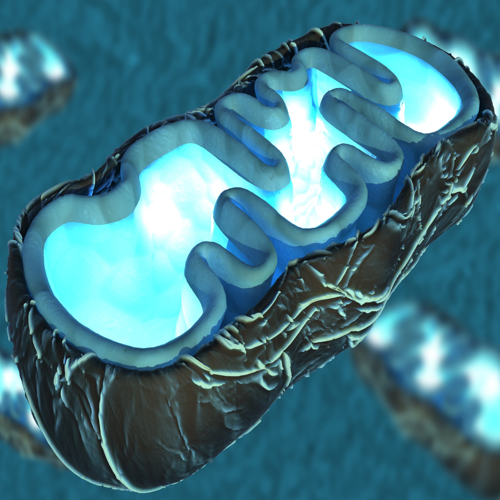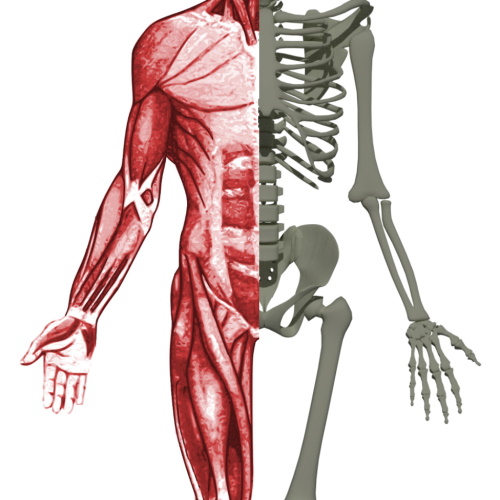Skeletal muscle makes up nearly half of our body mass and powers movement, metabolism, and hormone balance. With age, however, this essential tissue weakens, loses regenerative power, and becomes prone to wasting diseases like sarcopenia. Scientists now see mitochondria—the cell’s “power plants”—as central players in this decline.
When young, our muscle stem cells (MuSCs) spring into action after injury, dividing and fusing to rebuild fibres. With age, these same stem cells falter. Their mitochondria accumulate damage, generate excessive reactive oxygen species (ROS), and lose the ability to fuel repair. The paper we explore here reviews the cutting-edge science linking mitochondrial dysfunction to poor muscle regeneration and highlights new therapeutic approaches.
Muscle Stem Cells and Their Ageing Burden
At the heart of skeletal muscle regeneration are MuSCs, also called satellite cells. They usually lie dormant, conserving energy and protecting their DNA integrity. When injury strikes, they awaken, proliferate, and either repair fibres or self-renew for future needs.
Ageing disrupts this rhythm. Several signalling pathways, such as Notch, WNT, and JAK/STAT, become dysregulated. These changes force MuSCs into faulty divisions, reducing their pool and impairing repair. Epigenetic drift—alterations in DNA methylation and histone patterns—further destabilises gene expression. The end result is fibrosis replacing healthy fibres, reduced muscle function, and slower recovery from injury.
The Mitochondrial Factor
Mitochondria do far more than produce ATP. They regulate calcium flow, lipid metabolism, and cell death. In ageing MuSCs, mitochondrial mass and function decline, oxidative stress rises, and the electron transport chain (ETC) falters.
Damaged mitochondria should normally be cleared via mitophagy. But in old muscle, this process slows, leaving dysfunctional mitochondria in place. These defective organelles release ROS and mitochondrial DNA fragments, both of which amplify cellular stress. Over time, this creates a destructive feedback loop: oxidative stress damages mitochondria, which then generate even more ROS.
Oxidative Stress: A Double-Edged Sword
ROS are not inherently bad. In youthful muscle, small bursts of ROS signal MuSCs to proliferate and differentiate. But with age, ROS overwhelm antioxidant defences like SOD, catalase, and glutathione systems. DNA mutations, protein oxidation, and lipid peroxidation accumulate.
Mitochondrial DNA is particularly vulnerable because it lacks protective histones. Mutations in mtDNA disrupt the ETC, worsen ATP deficits, and push MuSCs towards apoptosis. This vicious cycle accelerates muscle decline and shrinks the regenerative reservoir.
Metabolic Reprogramming and Stem Cell Fate
Young MuSCs manage energy flexibly. Quiescent cells rely on fatty acid oxidation, while activated ones switch rapidly to glycolysis to meet energy surges. These shifts are not just about fuel: they alter epigenetic states, turning on or silencing genes needed for self-renewal or differentiation.
Ageing blunts this metabolic reprogramming. ROS imbalance and mitochondrial inefficiency block transitions, disturbing chromatin plasticity. Without these metabolic-epigenetic cues, stem cells fail to maintain stemness and prematurely differentiate or die.
The Role of Mitophagy
Mitophagy, the selective recycling of mitochondria, is essential for muscle health. Proteins like PINK1 and Parkin coordinate the tagging and removal of damaged organelles. In aged muscle, Parkin and PINK1 decline, leading to defective mitophagy.
Animal studies show that boosting Parkin can restore mitochondrial content and reduce oxidative stress, while its loss accelerates ageing phenotypes. Similarly, Ulk1, a master regulator of autophagy, ensures balanced mitochondrial turnover. When absent, muscle regeneration collapses. These findings make mitophagy a prime target for therapies.
Mitochondrial Dynamics: Fusion and Fission
Healthy mitochondria constantly fuse and divide. Fusion allows content mixing and repair, while fission isolates damaged fragments for removal. In ageing MuSCs, this balance tips. Proteins like DRP1 (fission) and MFN2 or OPA1 (fusion) become dysregulated.
Too little fission leaves cells unable to clear faulty mitochondria. Too much fission fragments the network, impairing ATP production. Fusion deficits, especially in OPA1, also destabilise inner membrane structure and trigger apoptosis. These imbalances directly reduce MuSC proliferation and regenerative capacity.
The Unfolded Protein Response in Mitochondria
The mitochondrial unfolded protein response (mtUPR) is a quality-control system that counters protein misfolding. In youth, it helps maintain proteostasis during bursts of mitochondrial biogenesis. In ageing, however, chronic activation of mtUPR backfires, allowing harmful mitochondrial genomes to accumulate. This stress contributes to long-term muscle degeneration.
Therapeutic Horizons
Encouragingly, several strategies aim to restore mitochondrial health and muscle regeneration.
Mitochondrial transplantation therapy (MTT): Direct delivery of healthy mitochondria into damaged muscle improves recovery in animal models.
Pharmacological agents: Compounds like BI4500 limit ROS release from complex I, while elamipretide stabilises mitochondrial membranes. Antioxidants such as MitoQ also show promise.
Nutrient and protein regulators: Boosting factors like α-klotho, DRP1, or Parkin may restore mitochondrial dynamics. NAD+ supplementation can counter redox imbalance.
Lifestyle interventions: Exercise enhances mitophagy, mitochondrial biogenesis, and antioxidant defences, proving a low-tech but powerful tool against muscle ageing.
Biomaterials and iPSCs: Engineered scaffolds or stem cell grafts can reprogramme the senescent niche and replenish stem cell reserves.
Looking Ahead
The review stresses that ageing muscle decline is not inevitable. Mitochondria are both culprits and potential saviours. By targeting their quality-control systems, scientists aim to preserve MuSC function and extend muscle healthspan.
Future research must clarify how mitochondrial dysfunction intersects with systemic ageing factors, such as inflammation and endocrine changes. Precision therapies may one day allow clinicians to fine-tune mitochondrial fusion, mitophagy, or antioxidant programmes for each patient.
Conclusion
Ageing skeletal muscle suffers from a perfect storm: stem cell depletion, mitochondrial dysfunction, and uncontrolled oxidative stress. These processes cripple regeneration, leading to frailty and disease. Yet mitochondria also hold the key to solutions.
Through therapies that repair, replace, or rejuvenate these organelles, science may soon unlock new ways to keep muscles young for longer. For an ageing global population, such advances could mean not just added years, but added strength and independence.
The study is published in the journal Cellular & Molecular Biology Letters. It was led by researchers from Sichuan Agricultural University.






